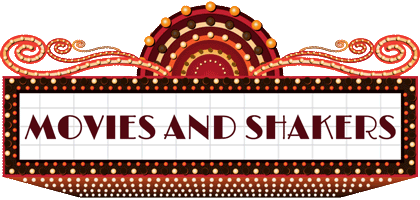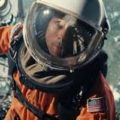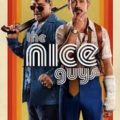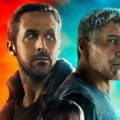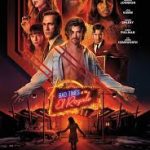
It’s a wild ride to the moon with Ryan Gosling. Director Damien Chazelle presents, in great detail, the steps and missteps along the way. He wanted Gosling to live it just as Neil Armstrong did, and for you to live it, too!
Just like the astronauts he portrayed, Chazelle (Whiplash, La La Land) and Gosling went way out of their comfort zones to making this film. The actor went through flight school and many dizzying rigors of the NASA training Armstrong took. It may make you dizzy watching him spinning and bouncing so fast and uncontrollably that may make you feel you’re about to lose your dinner. Some recommend sitting towards the back of the theater to avoid motion sickness, especially in IMAX.
He gets to tumble around in what look like big tin cans put together with glue. They’re actually replicas made to the exact size using panels of treated metal put together with rivets. The pressure put on the simulators and the men is so great, you’ll wonder how they withstood it. You’ll learn a lot about Armstrong, engineering and physics. It was nothing short of a miracle that they were able to dock spacecraft in orbit and reach the moon.
What Armstrong did was dynamic but he did not have a dynamic personality. He was able to compartmentalize his life and work. Gosling doesn’t show much emotion. Much seems to be seething under the surface except for one traumatic event. When his very young daughter, Karen. died of cancer, it left a big hole in his heart and flashbacks of them together appear throughout the film, even when he gets to the moon. That’s not to say there aren’t light moments when Armstrong’s wry wit and humor are in evidence. Those moments decrease as the moon mission approaches.
Sound plays a huge part in this film. The sound effects inside and out of the rockets and capsules are disturbing. Are they going to fall apart? They give a real sense of how clunky some of the equipment and controls were 50 years ago. It was noisy inside. The sound design (supervised by Ai-Ling Lee), is other worldly. The rocket seems to scream like a wild animal as the metal groans and creaks under the pressure of lift-off.



The score by Justin Hurwitz, Chazelle’s college friend, partner and music guru (Whiplash and La La Land) is majestic and memorable. It definitely enhances the mysterious beauty of the atmosphere and space. Yet it changes dramatically when there is a crisis in any of the flights. Getting to the moon was not a series of smooth rides. But the background is quiet and calm when it needs to be in the more passive scenes.
Chazelle was aiming for total immersion by his cast as well as the audience. He and the production designer recreated the tight, claustrophobic space capsules to size. And the simulators they employed put them in motion, just as if they traveled in space. So those beads of sweat and their nauseousness are the real deal.
The astronauts include Jason Clarke as Ed White, Patrick Fugit as Elliott See, Corey Stoll as Buzz Aldrin, Ethan Embry as Pete Conrad, Shea Whigham as Gus Grissom, Lukas Haas as Mike Collins, Pablo Schreiber as Jim Lovell. Kyle Chandler and Ciaran Hinds play Deke Clayton and Robert Gilruth in Mission Control. They sweat plenty, too
This is not a feel good movie, but an examination of the toll the space race took physically as well as psychologically on the men and their families. There was just as much pressure on their wives and kids for each flight leading up to the ultimate moon mission. No guarantee they would safely return, and some didn’t.
Josh Singer wrote the screenplay based on the book by James R. Hansen.
There isn’t a lot of dialogue. It mostly reflects facial expressions on closeups of Gosling and Claire Foy as his stoic, wife, Janet. Chazelle has many scenes that dwell on their eyes. Sometimes they’re expressive and sometimes not. There are almost too many big closeups to handle with blank stares, unless you like seeing every pore on Gosling’s face.
Chazelle reached out to Armstrong’s family to get his character right. Claire Foy (The Crown) plays Janet, Armstrong’s strong wife. She’s no shrinking violet in this film, but mainly only speaks out when something seems very wrong. The kids are made to think Dad’s just going to his office and getting ready for another business trip. Foy plays Janet reserved, apprehensive but relatively silent. She’s supportive, his equal and his rock. But she finally stands up to her husband about his need to talk to their two sons the night before leaving for the moon mission. He’s so cold and uncommunicative about it. He’s scared for them and for himself with the possibility that he might not come back.
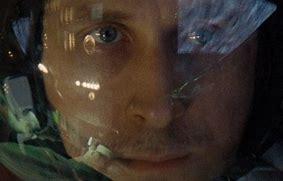


Director Chazelle didn’t use a lot of archival footage. But he used photographs Armstrong took with his Hassenblad camera from the spacecraft as a guide. Production Designer, Nathan Crowley, (TV’s West World, Dunkirk, The Dark Knight movies) did a remarkable job recreating those space and moon surface images. Chazelle picked a quarry in Atlanta he thought looked a lot like the surface of the moon. Cinematographer Linus Sandgren (La La Land, American Hustle, Joy) makes it look very like the surface we’ve seen in reports about the mission.
When Gosling looks out the window, you’re seeing pretty much what Armstrong saw in the 1960’s. They also had a light going around the capsule so it would simulate it moving in orbit. They say the biggest stage light ever made was used on the set to help create the reflections coming through the spacecraft and on those many closeups on Gosling’s face. We especially noted the one with moons reflecting in the pupils of his eyes.
There’s been some criticism that there are no scenes of Armstrong sticking the flag in the moon’s surface as he says his famous line. But the flag does appear prominently in the scenes outside the spacecraft.
The film is long and the pace is slow, but you’ll discover details about the United States and NASA’s space program 50 years ago you might never have known otherwise. It was a different time. Everyone was all for beating Russia and curious about what was up there. This may be Chazelle’s best film yet. It may not be a joyous celebration, but watching the intense performances and the meticulous detail, should put your over the moon.
Universal Pictures 2 hours 21 minutes PG-13
